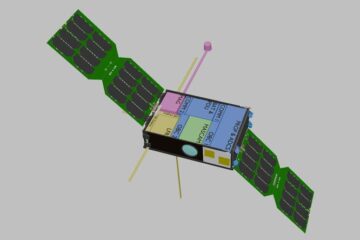Wnt signalling protein Dishevelled acts in the nucleus, not just in the cytoplasm

Researchers have identified that Dishevelled doesn’t only function in the cytoplasm and at the cell membrane – it must also pass into the nucleus. A study published today in Journal of Biology reveals that Dishevelled, a key player in the Wnt/beta-catenin signalling pathway, has to be localised in the nucleus to perform a key aspect of its function. This discovery should shed light on both normal embryonic development and the development of cancer.
In the paper, Sergei Sokol and colleagues, from Harvard Medical School, show that Dishevelled (Dsh) is constantly shuttling between the nucleus and the cytoplasm, owing to its nuclear export and import sequences, but that it has to be in the nucleus to respond to certain Wnt signals transmitted through the ‘canonical’ Wnt signalling pathway.
Dsh has always been considered to be a cytoplasmic protein, exerting its function as a stabiliser of beta-catenin in the cell cytoplasm after stimulation by Wnt secreted ligands binding to Frizzled receptors on the cell surface.
Sokol and colleagues show using Xenopus embryos and mammalian cultured cells that a mutated version of Dsh, which accumulates in the nucleus, is functional in the Wnt signalling pathway. Preventing Dsh from getting into the nucleus, however, either by mutating the nuclear localisation signal of the protein or by using a drug that disables the nuclear export machinery, impairs function. In mammalian cells, endogenous Dsh responds to Wnt ligands by mobilising to the nucleus.
“Our findings are consistent with a scenario in which Wnt signaling may cause nuclear translocation of Dsh followed by formation of a stable beta-catenin/Tcf3 complex and transcriptional activation of target genes”, explain the authors. Dsh’s exact role in the nucleus, however, is still unclear.
Dsh is also important in non-canonical Wnt signaling pathways, which involve proteins such as Rho GTPase and JNK. Sokol and colleagues show that nuclear localisation of Dsh is not required for its function in non-canonical signaling.
Media Contact
More Information:
http://www.biomedcentral.comAll latest news from the category: Life Sciences and Chemistry
Articles and reports from the Life Sciences and chemistry area deal with applied and basic research into modern biology, chemistry and human medicine.
Valuable information can be found on a range of life sciences fields including bacteriology, biochemistry, bionics, bioinformatics, biophysics, biotechnology, genetics, geobotany, human biology, marine biology, microbiology, molecular biology, cellular biology, zoology, bioinorganic chemistry, microchemistry and environmental chemistry.
Newest articles

New tech may lead to smaller, more powerful wireless devices
Good vibrations… What if your earbuds could do everything your smartphone can do already, except better? What sounds a bit like science fiction may actually not be so far off….

Caution, hot surface!
An international research team from the University of Jena and the Helmholtz Institute Jena are demystifying the mechanisms by which high-intensity laser pulses produce plasma on the surface of solids….

Exploring the Asteroid Apophis With Small Satellites
In five years’ time, a large asteroid will fly very close to Earth – a unique opportunity to study it. Concepts for a national German small satellite mission are being…





















